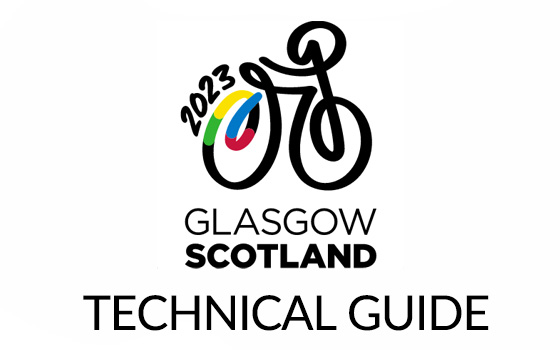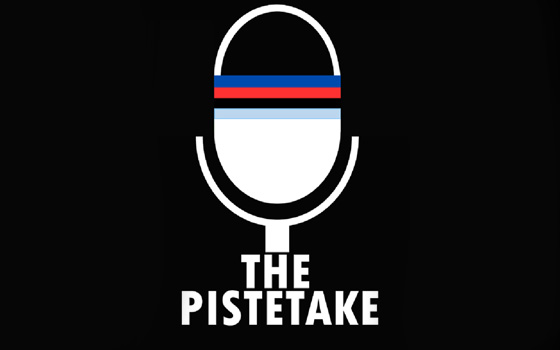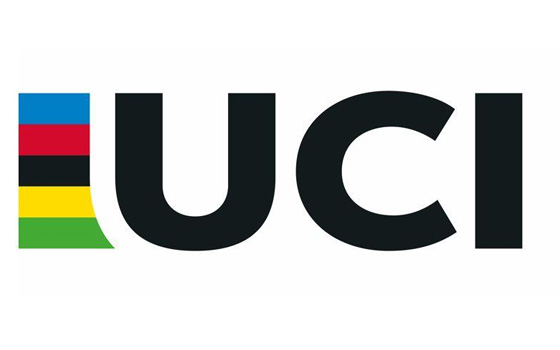Track Cycling Training - Ice Baths
Taking an after exercise plunge in an ice water bath (a tub of 12 to 15 degrees Celsius ice water) is a common practice among many elite athletes as a way to recover faster, and reduce muscle pain and soreness after intense training sessions or competitions. From elite runners like Paula Radcliffe to nearly all professional rugby players, the ice bath is a standard practice routine. In addition to the ice bath, some athletes use and contrast water therapy (alternating between cold water and warmer water) to get the same effect.
So, what's behind the ice bath and does it really work?
The Scientific Theory
The theory behind ice baths is related the fact that intense exercise actually causes microtrauma, or tiny tears in muscle fibers. This muscle damage not only stimulates muscle cell activity and helps repair the damage and strengthen the muscles ( muscle hypertrophy), but it is also linked with delayed onset muscle pain and soreness (DOMS) , which occurs between 24 and 72 hours after exercise.
The ice bath is thought to:
Constrict blood vessels and flush waste products, like lactic acid, out of the affected tissues
Decrease metabolic activity and slow down physiological processes
Reduce swelling and tissue breakdown
Then, with rewarming, the increased blood flow speeds circulation, and in turn, improves the healing process. Although there is no current protocol regarding the ideal time and temperature for cold immersion routines, most athletes or trainers who use them recommend a water temperature between 12 to 15 degrees Celsius and immersion times of 5 to 10 and sometimes up to 20 minutes.
So, while that is the theory behind the cold water immersion for exercise recovery, conclusive research about the pros, cons and ideal time and temperatures is still a ways off.
The Scientific Research
Of the studies that have looked at the effects of ice baths, cold water immersion and contrast water therapy on exercise recovery and muscle soreness, most offer inconclusive or contradictory findings.
One study from the July 2008 issue of the International Journal of Sports Medicine found cold water immersion and contrast water therapy may help recovery from short maximal efforts, or during events like stage races where athletes repeat high-intensity efforts on successive days. In this study, researchers had cyclists complete a week of intense daily training routines. After each workout, they used one of four different recovery methods and took nine days off between each week of workouts.
The four recovery methods included:
-Immersion in a 15 degree C (59 degree F) pool for 14 minutes;
-Immersion in 38 degree C (100.4 degree F) water for 14 minutes;
-Alternating between cool and hot water every minute for 14 minutes;
-14 minutes of complete rest.
They reported that the cyclists performed better in the sprint and time trial after cool water immersion and contrast water therapy, but their performance declined with both hot water baths and complete rest.
Another study published in the 2007 British Journal of Sports Medicine found that ice-water immersion offered no real benefit and, in fact, may increase post-exercise muscle soreness after heavy weight training. In this study the researchers compared 1-min immersions in either an ice bath (5 degrees Celsius) or a tepid bath (24 degrees Celsius) following an intense workout.
They found that the athletes who used the ice baths reported no difference in physical pain measurements such as swelling or tenderness. The athletes did, however, report more leg painthe following day, when going from a sitting to a standing position than those who had the tepid water bath treatment. According to the researchers, "Ice-water immersion offers no benefit for pain, swelling, isometric strength and function, and in fact may make more athletes sore the next day."
In 2007, a study from the Journal of Strength and Conditioning Research looked at the effect of contrast water therapy on delayed onset muscle soreness after intense leg press exercise. They found a smaller reduction, and faster restoration, of strength and power in athletes using contrast water therapy than those using passive recovery.
Real World Recommendations
It's clear that more research is needed before a real conclusion can be made, but so far the information that is available indicates the following:
-Cold water immersion after a hard workout won't hurt and may, in fact, help recovery.
-Alternating Cold water and warm water baths (contract water therapy) may also help athletes recover.
-Ice baths are not necessary; cold water baths (24 degrees Celsius) are as good and perhaps better, than ice baths.
-Active recovery may be as good as cold water immersion for exercise recovery.
-Passive recovery is not an effective way to recover.
-Hot baths after hard exercise may decrease recovery time.
Cold Water Therapy - How to Do It
Cold Water Immersion
If you are going to try cool or cold water immersion after exercise, don't overdo it. Ten minutes immersed in 15 degree Celsius water should be enough time to get the benefit and avoid the risks. Because cold can make muscles tense and stiff, it's a good idea to fully warm up about 30 to 60 minutes later with a warm shower or a hot drink.
Contrast Water Therapy (Hot-Cold Bath)
If you prefer alternating hot and cold baths, the most common method includes one minute in a cold tub (10-15 degrees Celsius) and two minutes a hot tub (about 37-40 degrees Celsius), repeated about 3 times.
Whether the science supports the ice bath theory or not, many athletes swear that an ice bath after intense training helps them recover faster, prevent injury and just feel better.
Sources
Vaile, J.; Halson, S.; Gill, N.; Dawson, B., Effect of Hydrotherapy on Recovery from Fatigue. Int'l J. Sports Medicine, July 2008.
Kylie Louise Sellwood, et al. Ice-water immersion and delayed-onset muscle soreness: a randomized controlled trial Br. J. Sports Med., Jun 2007.
Vaile JM, Gill ND, Blazevich AJ. The effect of contrast water therapy on symptoms of delayed onset muscle soreness. J Strength Cond Res. 2007 Aug;21(3):697-702.
So, what's behind the ice bath and does it really work?
The Scientific Theory
The theory behind ice baths is related the fact that intense exercise actually causes microtrauma, or tiny tears in muscle fibers. This muscle damage not only stimulates muscle cell activity and helps repair the damage and strengthen the muscles ( muscle hypertrophy), but it is also linked with delayed onset muscle pain and soreness (DOMS) , which occurs between 24 and 72 hours after exercise.
The ice bath is thought to:
Constrict blood vessels and flush waste products, like lactic acid, out of the affected tissues
Decrease metabolic activity and slow down physiological processes
Reduce swelling and tissue breakdown
Then, with rewarming, the increased blood flow speeds circulation, and in turn, improves the healing process. Although there is no current protocol regarding the ideal time and temperature for cold immersion routines, most athletes or trainers who use them recommend a water temperature between 12 to 15 degrees Celsius and immersion times of 5 to 10 and sometimes up to 20 minutes.
So, while that is the theory behind the cold water immersion for exercise recovery, conclusive research about the pros, cons and ideal time and temperatures is still a ways off.
The Scientific Research
Of the studies that have looked at the effects of ice baths, cold water immersion and contrast water therapy on exercise recovery and muscle soreness, most offer inconclusive or contradictory findings.
One study from the July 2008 issue of the International Journal of Sports Medicine found cold water immersion and contrast water therapy may help recovery from short maximal efforts, or during events like stage races where athletes repeat high-intensity efforts on successive days. In this study, researchers had cyclists complete a week of intense daily training routines. After each workout, they used one of four different recovery methods and took nine days off between each week of workouts.
The four recovery methods included:
-Immersion in a 15 degree C (59 degree F) pool for 14 minutes;
-Immersion in 38 degree C (100.4 degree F) water for 14 minutes;
-Alternating between cool and hot water every minute for 14 minutes;
-14 minutes of complete rest.
They reported that the cyclists performed better in the sprint and time trial after cool water immersion and contrast water therapy, but their performance declined with both hot water baths and complete rest.
Another study published in the 2007 British Journal of Sports Medicine found that ice-water immersion offered no real benefit and, in fact, may increase post-exercise muscle soreness after heavy weight training. In this study the researchers compared 1-min immersions in either an ice bath (5 degrees Celsius) or a tepid bath (24 degrees Celsius) following an intense workout.
They found that the athletes who used the ice baths reported no difference in physical pain measurements such as swelling or tenderness. The athletes did, however, report more leg painthe following day, when going from a sitting to a standing position than those who had the tepid water bath treatment. According to the researchers, "Ice-water immersion offers no benefit for pain, swelling, isometric strength and function, and in fact may make more athletes sore the next day."
In 2007, a study from the Journal of Strength and Conditioning Research looked at the effect of contrast water therapy on delayed onset muscle soreness after intense leg press exercise. They found a smaller reduction, and faster restoration, of strength and power in athletes using contrast water therapy than those using passive recovery.
Real World Recommendations
It's clear that more research is needed before a real conclusion can be made, but so far the information that is available indicates the following:
-Cold water immersion after a hard workout won't hurt and may, in fact, help recovery.
-Alternating Cold water and warm water baths (contract water therapy) may also help athletes recover.
-Ice baths are not necessary; cold water baths (24 degrees Celsius) are as good and perhaps better, than ice baths.
-Active recovery may be as good as cold water immersion for exercise recovery.
-Passive recovery is not an effective way to recover.
-Hot baths after hard exercise may decrease recovery time.
Cold Water Therapy - How to Do It
Cold Water Immersion
If you are going to try cool or cold water immersion after exercise, don't overdo it. Ten minutes immersed in 15 degree Celsius water should be enough time to get the benefit and avoid the risks. Because cold can make muscles tense and stiff, it's a good idea to fully warm up about 30 to 60 minutes later with a warm shower or a hot drink.
Contrast Water Therapy (Hot-Cold Bath)
If you prefer alternating hot and cold baths, the most common method includes one minute in a cold tub (10-15 degrees Celsius) and two minutes a hot tub (about 37-40 degrees Celsius), repeated about 3 times.
Whether the science supports the ice bath theory or not, many athletes swear that an ice bath after intense training helps them recover faster, prevent injury and just feel better.
Sources
Vaile, J.; Halson, S.; Gill, N.; Dawson, B., Effect of Hydrotherapy on Recovery from Fatigue. Int'l J. Sports Medicine, July 2008.
Kylie Louise Sellwood, et al. Ice-water immersion and delayed-onset muscle soreness: a randomized controlled trial Br. J. Sports Med., Jun 2007.
Vaile JM, Gill ND, Blazevich AJ. The effect of contrast water therapy on symptoms of delayed onset muscle soreness. J Strength Cond Res. 2007 Aug;21(3):697-702.



